These Flora and Fauna Rely On Forests
Here are six plants and animals, representative of myriad others, that depend completely on forests.
We are fortunate in Headwaters. Our forests are still large enough to support remarkable diversity. But what would be lost if our forests continue to decline or even disappear? Here are six plants and animals, representative of myriad others, that depend completely on forests. May we learn from our forests, enjoy them responsibly, and have the wisdom to protect them.
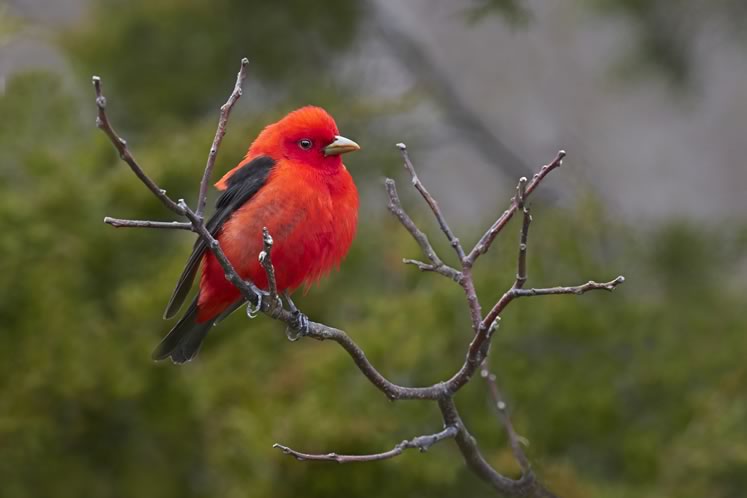
The brilliantly plumed scarlet tanager is the only one of hundreds of tanager species that breeds in Headwaters before heading to the tropics for the winter. Photo by Robert McCaw.
Scarlet Tanager
STATUS : NOT AT RISK
Breathtaking is an overused word, but sometimes exactly apt. The sight of a scarlet tanager foraging for insects among the bright green leaves of a spring woodland can leave an observer fumbling for superlatives.
Hundreds of tanager species exist in the tropics of the Americas, and most are sublime. Alas, a flight to Costa Rica or Colombia is necessary to see most of them. The scarlet tanager is an outlier, one of a handful of migratory tanager species and the only one that breeds in Headwaters. Why this tanager migrates thousands of kilometres, in contrast to its homebody relatives, is a mystery. Regardless, its wanderlust is most welcome.
Scarlet tanagers nest in mature deciduous woodlands, especially if these woodlands contain oak trees. In most of Headwaters that means red oaks. The appeal of oaks is likely the teeming insect fauna – caterpillars, beetles and so on – supported by those trees.
After their spring migration scarlet tanagers are difficult to spot, despite their brilliance and the exuberant singing of the males. This is because they usually sing on high, obscured by foliage. Their song is often compared with that of a robin, albeit a robin with a sore throat. Learning it will enable you to detect tanagers on woodland walks in spring through early summer.
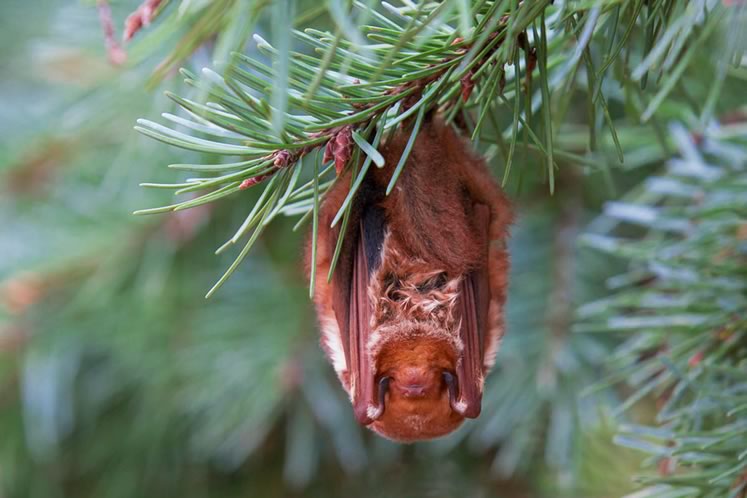
More cuddly than creepy, red bats have pixie-like faces and upturned noses. Photo by Shutterstock.
Red Bat
STATUS : NOT AT RISK
Red bats challenge the popular perception that bats are creepy. “Cuddly” might be a more accurate description. They have pixie-like faces with upturned noses and plush orange-red fur. I once found a red bat hanging from the branch of a shrub when I was birding in May. Had it been September or October, I might have mistaken him (yes, it was a him – males have brighter fur) for autumn leaves.
Red bats are forest dwellers and, unlike their big and little brown bat relatives, which often occupy the attics and soffits of human dwellings, they generally roost and raise their young in trees. These bats appear shortly after dusk and use their astonishing echolocation abilities to target the moths, beetles and other flying insects that thrive in forest ecosystems.
Though white-nose syndrome has wreaked havoc on several bat species, red bats have been left largely unscathed. Perhaps this is because, dispersed in trees throughout woodlands, they exercise social distancing for much of the year. However, some do gather in caves after migrating south to the United States to pass the winter.
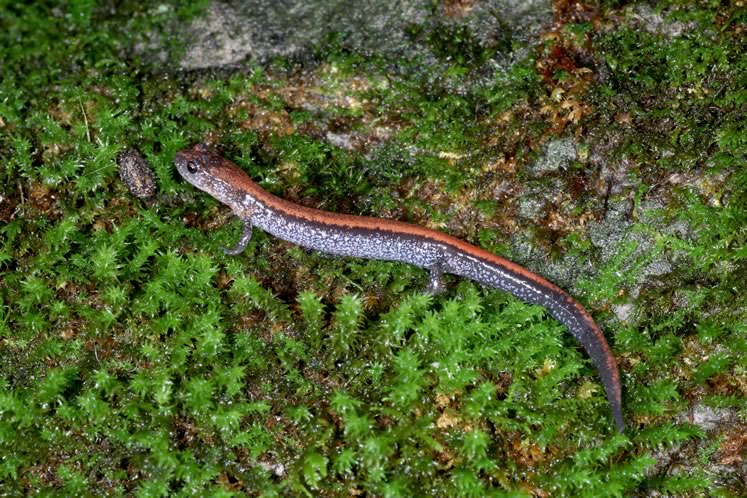
Probably the most common vertebrate in our woodlands, red-backed salamanders breathe through their damp skin, requiring the moisture of shade and the detritus on the forest floor to survive. Photo by Don Scallen.
Red-backed Salamander
STATUS : NOT AT RISK
This slender amphibian is probably the most common vertebrate in our woodlands. A New Hampshire study found the total biomass of red-backed salamanders in a woodland was twice that of all the birds, excluding owls and hawks, and equal to the total biomass of all the mice and shrews.
The Cambridge Dictionary defines an amphibian as “an animal, such as a frog, that lives both on land and in water, but must produce its eggs in water.” Red-backed salamanders break this rule. Unlike most of their amphibian kin, they don’t require ponds for breeding and egg laying. Instead, they usually lay them under or within rotting logs. And in another departure from the typical amphibian MO, red-backed mothers protect their eggs until they hatch.
Breeding occurs after dark in September and October. I clued in to this a few years ago when friends and I were out searching for caterpillars on a sultry autumn evening. We discovered red-backed salamanders seeking mates. Some sat atop woodland plants and others clung to the trunks of trees up to a height of a metre or so. A perch above the forest floor could allow their pheromones to circulate more freely, a come-hither message to other red-backed salamanders.
Red-backed salamanders are lungless. They breathe through their skin, a method of respiration that requires moisture. Dry skin leads to suffocation. That’s one reason red-backs are woodland creatures. They find life-giving moisture in the shade and detritus of the forest floor. When conditions get really dry, these salamanders retreat underground.
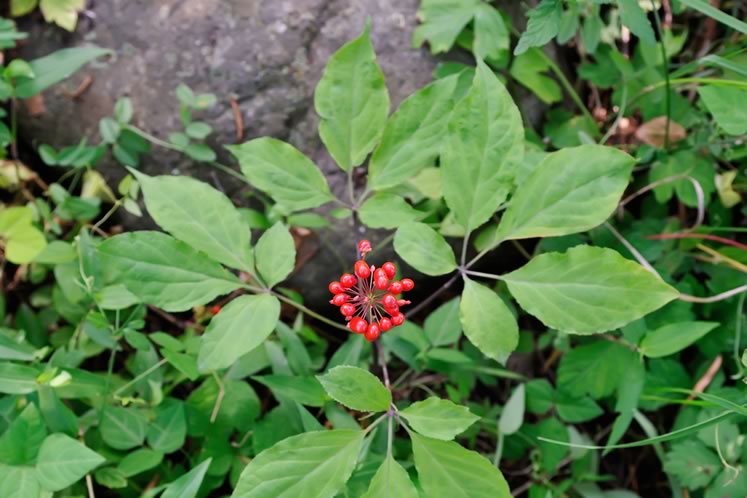
American ginseng captures a high price on the black market, which has reduced its once robust population to endangered scarcity. Photo by Robert McCaw.
American Ginseng
STATUS : ENDANGERED IN CANADA AND ONTARIO
I’ve rambled the woods in this part of Ontario for about five decades. Despite this history, I need the fingers of only one hand to count the number of times I’ve found ginseng. This fabled, almost mythic, forest-dwelling herb was once more common. But a plant with roots touted to increase energy, relieve stress, lower cholesterol and moderate blood sugar is going to attract some attention. Add the dubious claim that ginseng boosts performance in the bedroom, and its perceived value soars. Garnish those claims by peddling the belief that the most potent ginseng grows wild, and its current scarcity in our woods is explained.
Historically, ginseng root was collected by the ton from the forests of eastern North America. And though wild collection of the scattered remnants of its once robust population is illegal today, anything this valuable will attract bad actors. An internet search found a wholesaler willing to pay $180 to $900 (U.S.) a pound for freshly collected wild ginseng roots. The older the roots, the higher the price.
Ginseng doesn’t shout its presence. When not sporting bright red fruit, it is easily missed, hiding among such woodland stalwarts as Jack-in-the-pulpit and sarsaparilla. But as if its stratospheric value to human traffickers isn’t enough to imperil it, our abundant deer and turkey populations value it as well. No evidence that it improves their sex lives though.
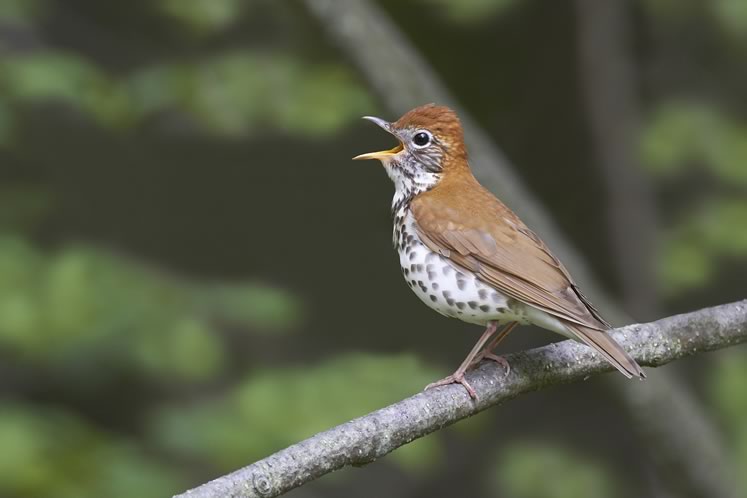
The population of wood thrushes, along with their melodic songs, has declined in the Credit River watershed by 36 per cent since 2002. They are now deemed of “special concern” in Ontario. Photo by Robert McCaw.
Wood Thrush
STATUS : THREATENED IN CANADA, SPECIAL CONCERN IN ONTARIO
Some sensory pleasures momentarily eclipse our worldly concerns. The smell of lilac blossoms does this for me. Inhaling the fragrance puts me in a good place, if only momentarily. The song of the wood thrush has a similar effect. Trouble recedes, peace descends. Thoreau called its song “a pure and unmatchable melody.”
Unfortunately, it’s becoming more difficult to hear this melody locally and in other parts of Ontario. Since 2002, says Kata Bavrlic of Credit Valley Conservation, the population of wood thrushes in the Credit River watershed has declined by 36 per cent. Ontario has also experienced an overall decline, according to a 2013 report by the Committee on the Status of Species at Risk in Ontario.
The COSSARO report cited a Pennsylvania study that found a significant relationship between forest size and the survival of wood thrush eggs and nestlings. As forest size decreases, nest failure increases, from 10 per cent in large forests to a stunning 56 per cent in small forests. One reason it’s riskier for wood thrushes to nest in small woodlots is because cowbirds frequent woodland edges. Cowbirds are nest parasites, laying eggs in the nests of other birds, and wood thrushes are regular victims. Nest predators such as crows, blue jays and raccoons also abound in small woodlots.
The wood thrush is only one of many birds that do better in large forests. We can improve their chances by planting trees to enlarge existing woodlots and to create corridors to link currently isolated woodlots.
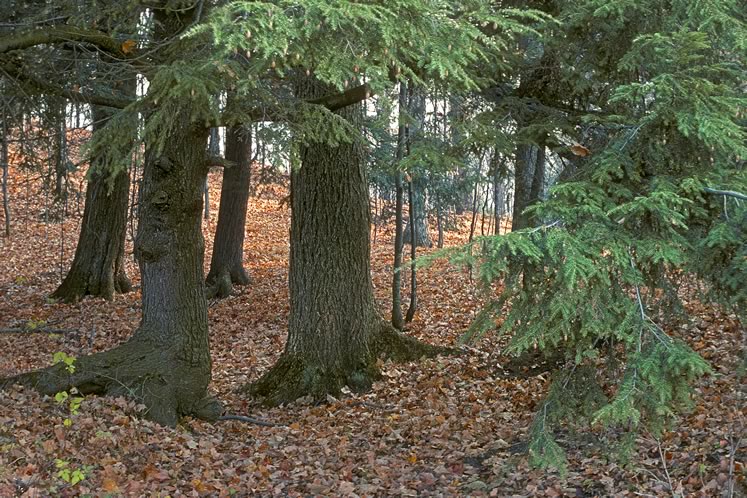
Hemlocks are late arrivals to the woodland, thriving in the rich moist soil of mature forests. Photo by Robert McCaw.
Eastern Hemlock
STATUS : NOT AT RISK
Hemlock trees are true forest denizens, seldom able to survive removed from the company of other trees. Fascinating research has shed light on the northward advance of trees after the last glaciation. White pine, able to thrive in sun, poor soils and dry conditions, arrived here about 1,000 years before hemlock. Hemlock had to wait until rich, moist soils were created by a thousand years of woody decay. Hemlock’s ability to thrive in shade, unlike most conifers, enables these trees to colonize established forests.
Hemlocks support many other forest organisms. Black-throated green warblers forage and build their nests in the tree’s foliage. Porcupines are also attracted to hemlocks, especially in winter. Twigs and small branches strewn on the snow at the base of hemlocks are a sure sign of porcupine presence. Look up, way up, to find the agent of the pruning.
And then there is the beautiful hemlock varnish shelf mushroom, a close relative of the Asian reishi mushroom, long been used to cure or relieve various ailments. It also shows promising medicinal uses and is being researched as a potential treatment for tumors and for healing wounds.
Related Stories
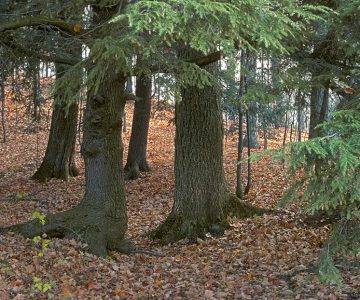
A Forest is More Than Its Trees
Sep 18, 2020 | | EnvironmentFrom deep in the earth to high in the sky, forests shelter teeming life.
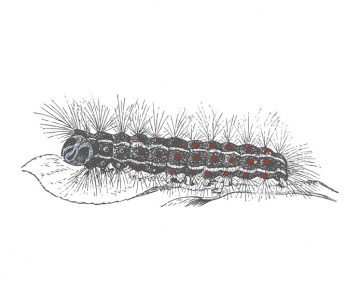
A Poetic Take on a Pest
Sep 18, 2020 | | EnvironmentCaledon poet Marilyn Boyle takes the gypsy moth caterpillar as her latest subject after her oak tree was decimated in the summer of 2020.
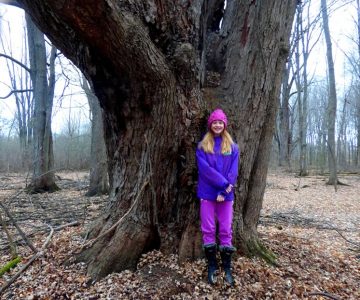
A Headwaters’ Giant
Dec 5, 2017 | | Notes from the WildDo you know of a bigger tree in the Headwaters Region?
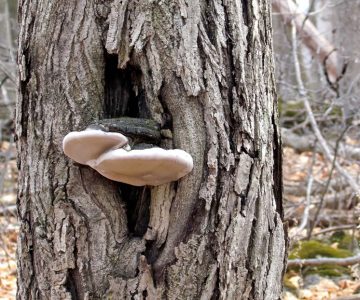
Butternut Canker
Feb 22, 2012 | | Notes from the WildMost of our butternuts are dead or dying, stricken by a fungal disease called butternut canker.
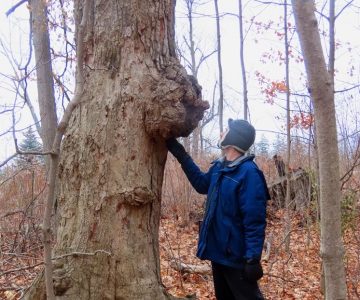
Burls and Trees on Stilts
Dec 5, 2019 | | Notes from the WildThe reasons burls grow on trees are still not fully understood, but infection by viruses, fungus and bacteria are likely causes.
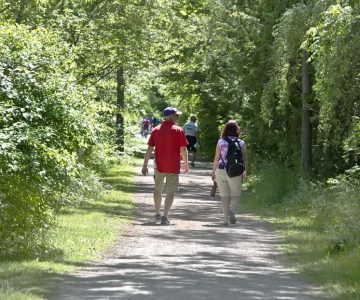
Hiking in Caledon and Dufferin
Jun 25, 2020 | | Good SportLooking to get outside for some fresh air? Here’s our guide to walking in Headwaters.
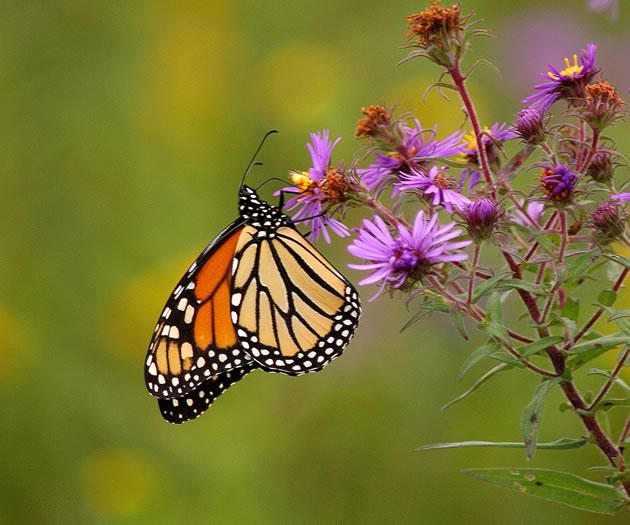
In Defence of Meadows
Sep 16, 2016 | | EnvironmentToo often belittled as “idle” land awaiting development – or “rescued” by reforestation – meadows deserve the same protection and respect as our woodlands and wetlands.
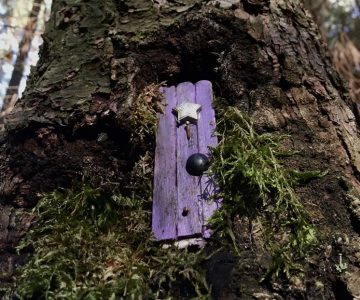
How to Find a Fairy House
Jun 25, 2020 | | LeisureKeen eyes can spot a variety of fairy abodes secreted along the pathways in Palgrave and Dufferin Forests.
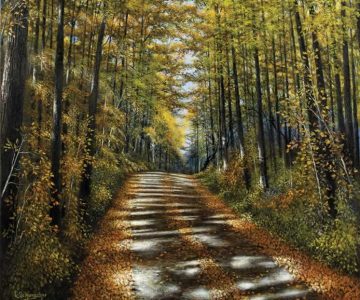
Meetings with Remarkable Trees
Sep 9, 2011 | | EnvironmentWe revel in their beauty, relax in their shade and are calmed by the soothing sound of their leaves soughing in the wind.
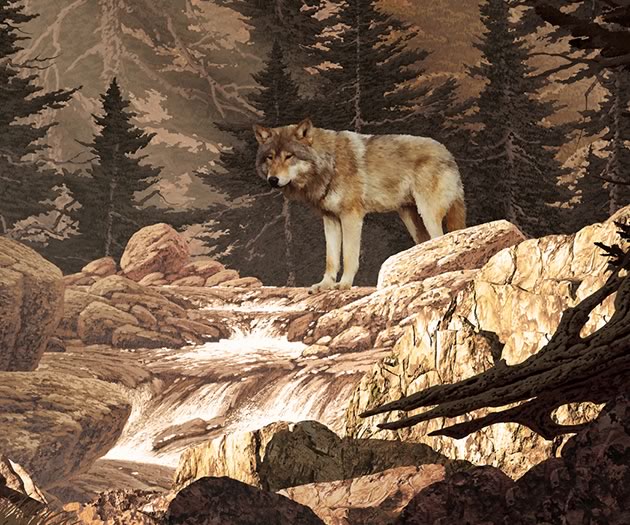
Shadows in the Forest
Nov 22, 2016 | | Historic HillsMany a table regularly offered squirrels, groundhogs and, of course, ducks and geese.
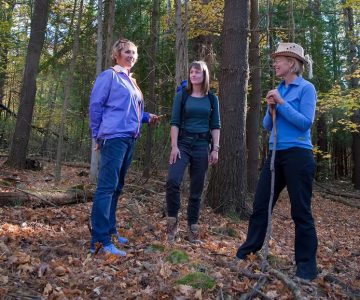
Take a Walk on the Wild Side: Forest Bathing
Mar 26, 2018 | | Good SportSlowing down, tuning in. With forest bathing, the slow movement takes to the woods.
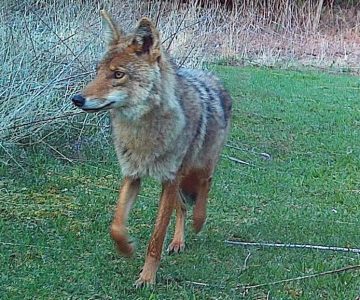
Snooping On Wildlife
Mar 24, 2020 | | EnvironmentTrail (or game) cameras are rugged, motion-activated devices about a quarter the size of a loaf of bread and meant for extended, remote use outdoors.









